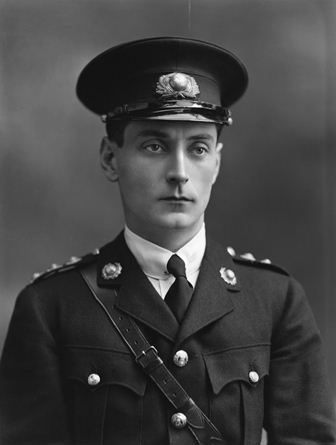05 August 1915
SUVLA - Lieutenant Edward Compton Mackenzie, Staff, MEF - During a GHQ dinner, on the night of 5 August, Compton Mackenzie, wrote of his concerns of the influence an unnamed General (most probably Brigadier General Hamilton Lyster Reed VC, see also the entry for July 26) had over Stopford
 "The one next to me was Sir Frederick Stopford, a man of great kindliness and personal charm, whose conversation at lunch left me at the end of the meal completely without hope of victory at Suvla. The reason for this apprehension was his inability to squash the new General opposite [not named, but probably Reed], who was one of the Brigadiers in his Army Corps. This Brigadier was holding forth almost truculently about the folly of the plan of operations drawn up by the General Staff, while Sir Frederick Stopford appeared to be trying to reassure him in a fatherly way. I looked along the table to where Aspinall and Dawnay were sitting near General Braithwaite; but they were out of earshot, and the dogmatic Brigadier continued unchallenged to enumerate the various military axioms which were being ignored by the Suvla plan of operations. For one thing, he vowed, most certainly he was not going to advance a single yard until all the Divisional Artillery was ashore. I longed for Sir Frederick to rebuke his disagreeable and discouraging junior; but he was deprecating, courteous, fatherly, anything except the Commander of an Army Corps which had been entrusted with a major operation that might change the whole course of the war in twenty-four hours."
"The one next to me was Sir Frederick Stopford, a man of great kindliness and personal charm, whose conversation at lunch left me at the end of the meal completely without hope of victory at Suvla. The reason for this apprehension was his inability to squash the new General opposite [not named, but probably Reed], who was one of the Brigadiers in his Army Corps. This Brigadier was holding forth almost truculently about the folly of the plan of operations drawn up by the General Staff, while Sir Frederick Stopford appeared to be trying to reassure him in a fatherly way. I looked along the table to where Aspinall and Dawnay were sitting near General Braithwaite; but they were out of earshot, and the dogmatic Brigadier continued unchallenged to enumerate the various military axioms which were being ignored by the Suvla plan of operations. For one thing, he vowed, most certainly he was not going to advance a single yard until all the Divisional Artillery was ashore. I longed for Sir Frederick to rebuke his disagreeable and discouraging junior; but he was deprecating, courteous, fatherly, anything except the Commander of an Army Corps which had been entrusted with a major operation that might change the whole course of the war in twenty-four hours."
Any real fortifications were further south at Anzac, however, whilst at Suvla there was very little that should have worried Reed, especially if he was basing his theory on the reconnaissance reports that had revealed few prepared fortifications. Lieutenant Colonel Cecil Aspinall showed Reed the aerial photographs of the area that confirmed the limited defences of the Turks. Suvla was partly entrenched at the Karakol Dagh, Hill 10 and Yilghin Burnu, with an outpost on Lala Baba. Apart from these unconnected positions, Suvla lay virtually undefended, and it was these fundamental facts that Stopford and Reed did not seem to grasp. The result of waiting for guns before making any serious movement forward against these ‘fortifications’ limited the objectives of the landing from the very beginning.
The importance of speed in securing the surrounding hills before the Turkish reinforcements arrived was not mentioned in the latter drafts of the plan which put the overall strategic reason for Suvla in firmly securing a safe port to aid the subsequent exploitation of the Anzac breakout, in danger of failing.
Compton Mackenzie went on to write of this dogmatic Brigadier:
"Well, General Dash is not going to advance a single yard until the Divisional Artillery is ashore. He doesn’t seem to grasp the elementary principles of this push as we’ve had it explained to us."
Note: Photograph is of Sir Edward Compton Mackenzie. He became the Director of British Intelligence in the Eastern Mediterranean after Gallipoli and at the wars end resumed his career as an author and published almost a hundred books on various subjects. His two most famous works are the comedies Whisky Galore and The Monarch of the Glen.
"SOURCE:
S. Chambers, Suvla: August Offensive (Pen & Sword, Barnsley, 2011) pp.22-23., C. Mackenzie, Gallipoli Memories, (Cassell & Co, London 1929) p.353.
